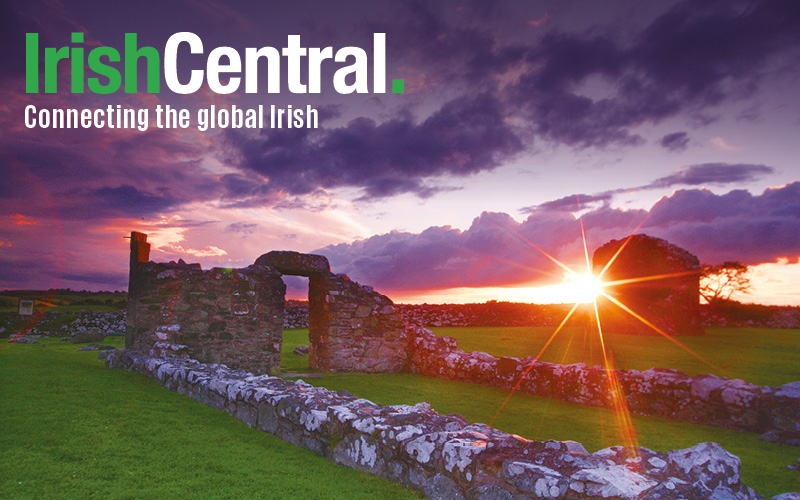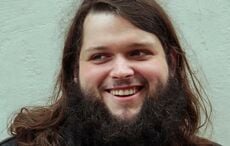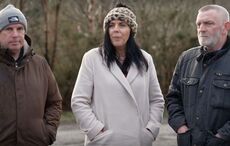Novelist and former firefighter John J. Finucane could write a book about it, and thankfully he has. Titled "When the Bronx Burned" (iUniverse Press) it's a first hand account of those turbulent years in the city's history that has all the authenticity of a lived experience. His memories drive the narrative, as does his slow burn anger at the foot dragging politicians of the era (who usually traded conscience for political expedience). Finucane's own story is a classic Irish American tale. Raised in the shadow of Manhattan, his father and mother hailed from Co. Clare and Co. Sligo respectively, and he was raised in Cauldwell in the South Bronx (the St. Peter and St. Paul Parish). In his early twenties he joined the paratroopers Air Bourne Division, and by the age of 26 in 1963 (now married to his wife Margaret, originally from Co. Cavan and father to John, Brian and Stephanie) he began a three decades long career as a firefighter. In the early years of his career at Engine 85, what he calls the Irish sense of humor and the Irish character dominated, although there was racial diversity too. Irish rebel songs were sung at times, including "The Patriot Game" and "The Wild Colonial Boy." But the relative peace would soon be broken, during the years when the Bronx burned. Finucane worked with Engine 85 and Ladder 59, both of which placed him in the thick of the action. "We always knew that the fires were arson. When I got there other firefighters would fill you in real quick," Finucane, 70, told the Irish Voice. "I arrived at Engine 85 the South Bronx post at the tail end of 1967. At the time the place was full of shoulder-to-shoulder buildings, which were high density, and highly populated. There was maybe two or three feet between most buildings. Some were even attached." In the South Bronx at the time many tenants were on welfare and living in rent-controlled buildings. Landlords simply weren't making the profit they wanted to make. Some landlords walked away from these albatrosses, but the majority would hire a local gang to burn out the buildings. The fires were usually set in the early hours of the morning, when the buildings were still occupied. In the early days they'd start fires in lower floors, but they quickly leaned that the top floor burned through the entire building more effectively, ensuring total destruction. The landlords had learned that fires were profitable, especially in the early years when they usually held multiple insurance policies on the buildings - which were paid without investigation, no questions asked. As the years passed even the buildings' tenants got in on it, moving their household furniture onto the street before the fire was set (they expected and received compensation and a new apartment from the city). It was a perfect storm of unscrupulousness, corruption, and greed and, in many cases, desperation - but it was costing hundreds of lives annually. "It was absolutely wild. In 1968 the three firehouses, Ladder 31 and Engine 82 and my own station, Engine 85, were the busiest firehouses ever," Finucane recalls. "Collectively there we did over 35,000 runs in one 12 month period. I'm not talking about garbage cans burning, I'm talking about two rooms, three rooms in an apartment, or maybe two floors, or maybe the whole damn building. Some 350 people a year were dying in these fires, with six to 10 of them including firemen." Most of the fires occurred in occupied buildings in the Bronx were marked suspicious but were never investigated. Fires in the unoccupied buildings were all considered suspicious, especially considering they could have up to 40 fires within the same building over a period of years, but they went uninvestigated too. Finucane has his own theories - and they're thoroughly convincing - about why the mayor and the city allowed the rot to go on for over a decade. In his novel we see the fire department and the union's desperate calls for fire marshals to investigate rebuffed time and again. "The city claimed they didn't have the money to hire investigators to examine thousands of suspicious fires. But they had the money to move hundreds of families and their belongings out of the South Bronx," he maintains. "In 1977 Mayor Koch finally gave us investigators who were also firemen, and then all the burnings stopped. We believe it was a political conspiracy, because by that time it was mission accomplished, the South Bronx had been cleared, completely burned out." In his dramatic and convincing new book, Finucane shines a fireman's torch on how and why the clearances happened, and just who hoped to benefit.




Comments